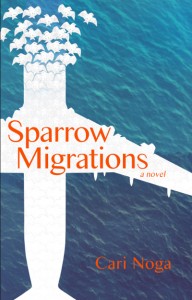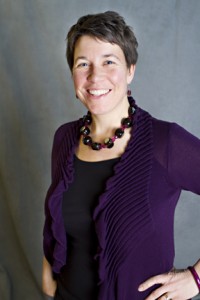Grant Faulkner, Dir. of National Novel Writing Month, or NaNoWriMo for short, talks to The Doctors about overcoming discouragement from others, crashing your own gate, writing a terrible first draft, editing it so it gets better and better, and becoming part of a community of writers who support and nourish each other.
Tag: national novel writing month
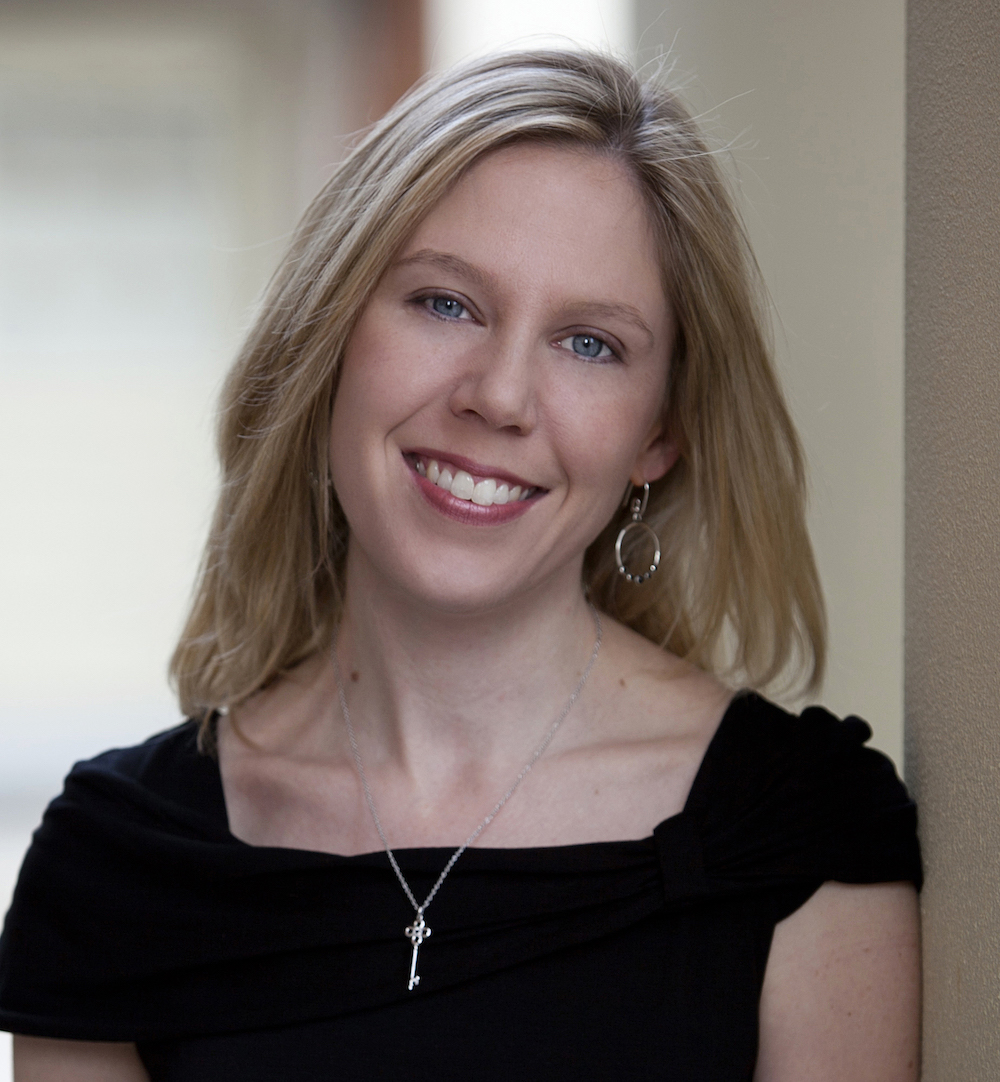
We at The Book Doctors love National Novel Writing Month (NaNoWriMo). For those of you who don’t know, they are an organization that gets together in informal ways all over the world, and in the month of November, WriMos (NaNoWriMo participants) write 50,000 words. No plot, no problem. Many, many writers have gone on to get book deals after participating. Every year, we do an online Pitchapalooza with NaNoWriMo, and we get some fantastic pitches. One of our winners, Stacy McAnulty, had such a great pitch, and wrote such a wonderful book, that she got a book deal. Her book is out now, so we wanted to check in with her to see what it was like to go from NaNoWriMo to getting a book deal. We’re doing another online NaNoWriMo Pitchapalooza until March 31, 2016. See below for details.
ANY PARTICIPANT WHO BUYS THE ESSENTIAL GUIDE TO GETTING YOUR BOOK PUBLISHED  GETS A FREE 20 MINUTE CONSULTATION WITH THE BOOK DOCTORS (email with proof of purchase to [email protected])
GETS A FREE 20 MINUTE CONSULTATION WITH THE BOOK DOCTORS (email with proof of purchase to [email protected])
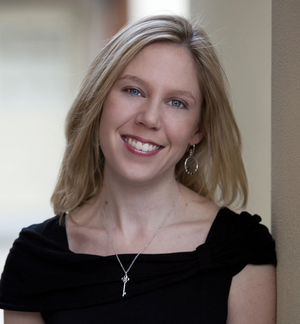

The Book Doctors: What were your favorite books as a kid, and why?
Stacy McAnulty: We’re starting with the question that always embarrasses me because I didn’t read as a young kid. I can remember sitting in fourth grade with the book How to Eat Fried Worms open on my desk, and instead of reading the words, I literally counted them. I’d count all the words, then turn the page so the teacher would assume I was quietly reading.
Also, we didn’t have many books in the house. I remember enjoying Little Golden Books and the picture book The Fourteen Bear Summer and Winter (which was held together with duct tape).
I didn’t fall in love with a book until high school, and that was Pillars of the Earth by Ken Follett. I never counted the words in that book. It’s about 1,000 pages; the word count must be in the mid six-figures. That novel blew me away and was also held together with tape.
TBD: What made you want to do something as ridiculous as write a book?
SM: It is ridiculous! It’s a crazy challenge similar to climbing Mount Everest or swimming the English Channel. But I guess what appeals to me about writing a book (over climbing or swimming) is you can do it in your PJs. And while eating gummy worms. And you likely aren’t going to fall to your death or be eaten by a shark. Not much physical danger involved in writing a book. Though today my right shoulder is a little tight.
I have to write. It’s almost a sickness. Plots, crazy ideas, and conversations with imaginary characters are constantly running through my head. The only way to get these persistent thoughts out of my head is to write them down (or type them up). Maybe it is a sickness?! Multiple Mass Ideas Sickness. Obsessive Writing Disorder.
TBD: Where did you get the idea for The Dino Files series?
SM: My son asked for a “real-life dinosaur” for his fifth birthday. Obviously, he was about sixty-five million years too late. I started writing the first draft for him. I’d write a chapter during karate class and read it to him immediately after. It was great motivation having someone eager to hear the next segment of the story.
TBD: What were some of the joys and difficulties of writing in the voice of a kid?
SM: I’ve been told I’m immature (not sure if it was meant as a compliment, but I’ll take it). I like to joke around, and I love to learn. Isn’t that the makings of a kid? Children get to be crazy. They can blow a giant bubble with gum and truly believe this is a reasonable transportation method for traveling to the moon. Their world has many rules. Don’t touch that. Don’t go there. Quiet down. Be still. But their imaginary worlds are still full of endless possibilities. Gravity? We don’t need no stinkin’ gravity. Writing for kids lets me be a kid.
As for difficulties? There are some limits to the language and sentence structure. Fortunately, I have a limited vocabulary. You don’t want to discourage a reader, but you also don’t want to talk down to a kid. They’ll pick up on that quick. The biggest challenge in The Dino Files series is the word count. My editor wanted between ten and eleven thousand words. We needed to leave room for Mike Boldt‘s pictures and teaser chapters for the next book. That meant reducing the first manuscript by twenty-five percent. Cutting can be harder than adding words. At least for me. I had to slash jokes, description, and even characters. I learned to stay true to the story and focus on the action.
TBD: Did you have kids read the book as you were developing it?
SM: In general, I only share my work with the kids I cook dinner for–which is a small group of three. As I mentioned, I read the first draft to my son as I was writing it. Unfortunately, young kids don’t appreciate revision. When I created the next draft, I asked my son if he wanted to hear it. The answer was no. Luckily, I have two other kids. My eldest is a teenager. You want honest feedback? Ask a teen to critique your work. She read the next few drafts aloud to me. It’s great to hear your words interpreted in someone else’s brain and mouth. She also loved to point out my inconsistencies, and she would yawn dramatically at the boring parts (which have all now been cut!).
TBD: How did you go about getting your book deal?
SM: I’d published a picture book in 2013 with a small press (unagented). I knew that if I wanted a career, an agent was vital. I entered contests and went to conferences. But, in the end, I was pulled from the dreaded slush pile. I queried my now-agent with a picture book. I was sending out about a dozen queries a month. Lori Kilkelly offered representation based on that book, but I asked her to read The Dino Files before I accepted her offer. I wanted to know if she liked my longer works as well. Lori did see potential in The Dino Files. Potential is code word for needs another revision.
About seven months later, we went out with The Dino Files. Random House Kids replied a few weeks later: What a great read! Does the author have ideas for future books in the series? Those are the moments writers live for.
TBD: What are you doing to promote and market your book?
SM: Marketing a book for kids is tricky. You want to connect with the reader, which, for The Dino Files, are kids ages seven to ten. But this demographic doesn’t have Twitter or Facebook accounts, not to mention credit cards for online buying or the ability to drive the minivan to the bookstore. So I need to connect through the adults in their lives first. I offer free Skype visits for classrooms. I’ve created a website with printouts and videos that parents and teachers can share with their kids. I’ve sent postcards to libraries and bookstores. I know there are dino-loving kids out there. I want to meet them. I want them to tell me I say Deinonychus wrong. I want them to tell me what kind of dinosaur would make the best pet. I want to inspire future paleontologists (and future writers!).
TBD: It’s so exciting to get a three-book deal. Are you already working on the next book?
SM: All the books are done and hitting shelves this year! The Dino Files series is intended for kids in elementary school. We hope they fall in love with the first book. And if they do, we can’t expect them to wait a year for the next book. Kids are binge readers. They want more. We are ready to give them more.
I’m currently working on a middle-grade novel about a twelve-year-old math savant. She has been homeschooled and is technically ready for college, but her grandmother insists she give public middle school a try first. And I’m always working on picture books.
TBD: How did National Novel Writing Month help you write your book and get it published?
SM: Full disclosure, the first draft of The Dino Files was not an official NaNoWriMo win. The word count was only twenty thousand. (And the printed version is under eleven thousand.) But I have completed the fifty-thousand-word NaNoWriMo marathon three times. NaNoWriMo makes you accountable. Resolutions, promises written on sticky notes, self-imposed deadlines–none of these have the power and prestige of NaNoWriMo. NaNoWriMo could only be improved if, somehow, they could send an electric shock through your keyboard when you failed to meet a daily goal or if there was a multi-million-dollar cash prize at the end.
TBD: We hate to ask you this, but what advice do you have for writers?
SM: Yep, this is a tough question. Luckily, I have a definitive answer on what all writers must do. I’ll call it Stacy’s Top Commandments on Writing.
- Never talk about your first draft. (This is actually one of Stephen King’s rules.) If you’re telling your spouse or your hairdresser or your hedgehog all about your next project, you’re wasting your breath. Unless your hedgehog can take dictation. These people likely don’t care. Or at least, don’t care as much as you do. And when you actually sit down to write your story, it’ll feel like work. So when a coworker or a neighbor asks what you’re working on, just give them a title. But be vague. Maybe something like Sunset at Dawn.
- Carry a book everywhere. No, not your phone with a book app, not your Kindle, and definitely not a tablet. Writers read. If you’re carrying a book everywhere, you’re likely to read it. And it’s good karma to “advertise” another writer’s book.
- Compare yourself to everyone. Let’s be serious. You’re going to do it anyway. I’m just giving you permission. That way, you won’t feel guilty. Compare yourself to bestselling authors. Compare yourself to the guy in your critique group that just got a six-figure deal for a memoir about camping with his three-legged dog. Compare yourself to Jennifer Lawrence (because we all secretly want to be Jennifer Lawrence or her best friend). When you’re done comparing, move on to number four.
- Write every day. I hate this rule. It’s a cliché at this point like New Year’s resolutions and diets that start tomorrow. But…I do believe this strategy (can you call three words a strategy?) works for a first draft. You must add to your work in progress each day. Or you risk your pesky muse fleeing the scene.
- Get professional help. Of course, you may need help for your physical and mental problems, but I’m talking about your plot problems. Your character problems. Your spelling problems. You need to invest in yourself. I draw this inspiration from Vin Diesel. (Aren’t we all inspired by Vin Diesel?) He told a story on a talk show about saving up forty-some thousand dollars. Instead of buying a car or something flashy, he invested that money in himself. He made a small film with a friend to showcase his talent. That little movie led to a role in Saving Private Ryan. So if you are debating between buying a BMW and taking a writing class, take the class. Deciding between buying a Tesla and hiring an editor, get the editor. (Warning: And if you have forty-thousand dollars to pay an editor, I’m totally available.)
- Celebrate good times! It’s easy to get excited when an agent offers representation or when a publisher makes a deal or when a review is accompanied by a star. We know those are the rare, exciting moments in a writer’s life. But we must also celebrate the other big moments. When you type ‘the end’ on a manuscript, you deserve a dinner out. When you come up with that ultimate plot twist after you’ve been brainstorming (and crying about it) for a week, you deserve a glass of your favorite beverage. When you recover your work in progress from a fried hard drive, you deserve a glazed donut with sprinkles. (Guess how I spent my morning?) Take the time to celebrate your victories.
- You need writer friends. Of all my rules, this is a must. I would not be a published author without the support of my writerly friends. Your family won’t understand your problems and frustrations. Unless you are a family of writers. Your non-author friends won’t understand plot arcs and rejection letters. Your neighbors don’t understand these acronyms: WIP, YA, ARC. Writer friends can empathize like no others. They will listen for hours about rejection letters while your mom will give you two minutes (tops!) and then she’ll suggest you try something new like painting because you always liked to color when you were a child. Just today, a writer friend convinced me not to quit a project I’ve already sunk a year of my life into. Writer friends have given me advice on everything from how you organize an author visit, to how long should I wait before following up with an editor, to does this author photo make me look fun or crazy? Writers, while not exactly a rare breed (nine out of ten retirees are working on a memoir, and the other one has a picture book called The Adventures of [insert some animal that her grandson just loves]), work best in a nurturing, warm community. Just like bacteria.
Sixth Annual NaNoWriMo Pitchapalooza
For those of you not familiar with Pitchapalooza, here’s the skinny: You get 250 words to pitch your book. Twenty-five pitches will be randomly selected from all submissions. We will then critique the pitches online so you get to see what makes a great pitch. We will then choose one winner from the group. The winner will receive an introduction to an agent or publisher appropriate for his/her manuscript. We will also crown a fan favorite who will receive a free one-hour consult with us (worth $250).
Beginning February 1, 2016, you can email your pitch to [email protected]. Please do not attach your pitch, just embed it in the email. All pitches must be received by 11:59PM PST on February 29, 2016. The 25 random pitches will be posted on March 14, 2016. Winners will be announced on April 1, 2016. Anyone can vote for fan favorite, so get your social media engine running as soon as the pitches go up!
Learn more about the sixth annual NaNoWriMo Pitchapalooza here.
Stacy McAnulty grew up outside of Albany, New York and received her B.S. in Mechanical Engineering from the University at Buffalo. She currently lives in Kernersville, NC with her three children and two dogs. The Dino Files chapter book series follows a nine-year-old dinosaur expert, his paleontologist grandparents, a cat named Saurus, and fossils that might not be so extinct!
Join our newsletter to receive more interviews and tips on how to get published.
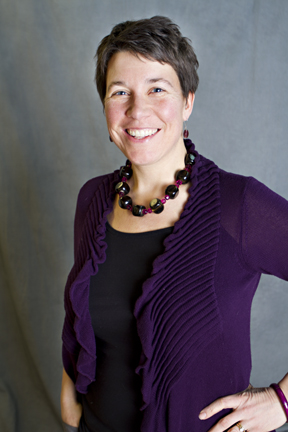
The Book Doctors met Cari Noga in 2011, when she won our National Novel Writing Month Pitchapalooza (think American Idol for books). Her pitch was spectacular, haunting and superbly crafted. Her story is about a 12-year-old boy with autism who witnesses the Miracle on the Hudson plane crash, and how he and other crash witnesses and survivors find their lives intersecting and transformed by the extraordinary event—and by each other. We worked with her on her novel Sparrow Migrations and discovered it was a richly wrought tapestry of human emotion, both beautifully plotted and a delightful read. The novel was a semifinalist in the 2011 Amazon Breakthrough Novel Award contest, and the spring 2013 winner of the ForeWord Firsts contest sponsored by ForeWord Reviews. Cari herself was already a published author (Road Biking Michigan with Globe-Pequot Press in 2005). When we sent her book out to our agent and publishing contacts, we were shocked that no one snapped it up. The problem is she’s not famous. There are no zombies or werewolves in her book. No S&M involving rich people. Just a great story with great characters about a world-famous event. So Cari decided to self-publish in April, 2013. Sparrow Migrations was just named a literary fiction category semi-finalist in the Kindle Book Review’s 2014 Kindle Book Awards. So we thought we’d pick her brain and the beauties and terrors of self-publishing literary fiction.
The Book Doctors: The general wisdom is that self-publishing literary fiction is especially difficult. Do you agree with this wisdom? If so, how have you gotten around these difficulties? If not, why not?
Cari Noga: I think publishing anything that isn’t directly aimed at a genre-specific audience is more difficult, whether you go the self-pub route or traditional. The upside is that if you do reach a literary audience, the potential is much wider. I seem to have found a niche with book clubs, starting right in my own community, and rippling outward—I just did a Skype chat with a club in Phoenix. My town has a strong sense of locavorism –people like to buy local, eat local, etc. I think that extends to reading, too. One suggestion to make locavorism work for you: Check whether your library offers book club kits – multiple copies of the same book, available for simultaneous checkout. Mine does, and when I did an appearance, I asked that they create a kit
TBD: What has been the single most difficult thing about self-publishing?
CN: Retail distribution. I was aware that I would have to offer discounts, but I did not appreciate enough the importance of offering returns. My book is available through Ingram & Baker and Taylor, but as a POD book there is no way to return it.
TBD: What has been the single best thing?
CN: Hearing from readers, especially in the book club settings. Free time is my own most prized resource, so to know that people are spending theirs reading my book is incredibly gratifying. Hearing that they like it, that the characters resonate authentically, and that they’ve learned something – whether about autism, birds, or something else – is like having my cake, icing and ice cream, too.
TBD: What marketing strategy has been most successful? What has been least successful?
CN: Most successful by a longshot: Kindle giveaways. I’ve done two (June 2013, 5,400 copies downloaded; Jan. 2014, 33,600 copies downloaded.) Paid sales increased after each and reviews soared. The January one was advertised on Bookbub, which I also recommend.
Least successful: Advertising in trade journals like PW Select. Not because the ads were bad or poorly designed, but the brick-and-mortar bookseller audience that reads them are predisposed against self-published books, especially POD like mine, due to the inability to return unsold copies and the inconvenience of dealing with an individual publisher.
Book clubs are still proving a good audience – I’m a guest at three different live discussions here in town next month and my first by Skype, with a club in Phoenix that somehow latched onto it.
TBD: How have you convinced independent bookstores to carry your book?
CN: Goes back to locavorism. I have two indie stores in my town that are both eager to work with local authors. I had a relationship with one (Horizon Books) going back to a nonfiction book (Road Biking Michigan) I published traditionally ten years ago and was fortunate to have one staff member be a beta reader. They have two other stores in northern Michigan as well. The other newer store is Brilliant Books, a cozy, customer-centric place that hosted my launch. I showed them both copies while in proof stage, asked them to carry it and offered industry standard discounts. Another store contacted me after reading local media coverage. A few other stores have been receptive to cold calls.
TBD: Would you still like to see your book published by a major publisher? If so, why?
CN: I would like to see my book in more bookstores. At the book clubs I visit, more people bring paper copies than Kindle, so I’m concluding there’s more potential for the paper copy than I’m getting in my half-dozen stores and on Amazon. However, I’d be much more cautious about the deal I’d sign than I would have two years ago. More than a publisher, right now I would like an agent who could advise me about the best moves to make not only for this book, but career-wise.
TBD: Are you working on a next book? If so, what is it about? Tentatively titled Tres Vidas, my next novel is, like Sparrow Migrations, a story about relationships. The three lives that intersect are Lucy, a suddenly-orphaned 9-year-old who must leave her NYC home to live on a northern Michigan farm with her prickly aunt Jane, and Miguel, a migrant worker who becomes a bridge between the two.
CN: How did you get 180 reviews of your book on Amazon?
TBD: Reviews spiked after the giveaways. After the initial release in April 2013, when I ran into people who told me they liked the book – in person, by email, on social media –my standard reply was to ask them to write a review on Amazon or Goodreads. A surprising number actually did, and I got up to about 20 reviews that way. That doubled after the first giveaway. After the second giveaway, timed to the fifth anniversary of the Miracle on the Hudson plane crash, which is the starting incident in the book, they just came pouring in. I’ve not solicited any reviews in months.
TBD: You enrolled in Amazon’s KDP select program. Was the exclusivity they requested worth it?
CN: Yes – see the giveaway results above. I do plan to expand to other platforms (Nook, Kobo) this year.
TBD: We can’t help but ask how you view the Amazon/Hachette tug of war since you used Amazon’s publishing program. Thoughts?
CN: I think there are far more shades of gray to the situation than have emerged in the mainstream narrative (Amazon: evil corporate behemoth; Hachette, guardians and saviors of literature.)
J.A. Konrath http://jakonrath.blogspot.com/ says that in this mad, crazy publishing world of the moment, the only two people who matter are the writer and the reader. Everyone else in a middleman who has to prove their value. Right now, Amazon is connecting those two best. They also treat authors better financially (Both my books are priced at $14.95. I get about $4 per novel sold vs. 75 cents for my Road Biking book, which was taken out of print.*) More people are reading, thanks to the Kindle, which has added another revenue stream for authors.
Meanwhile, the ranks of indie bookstores are actually growing as they embrace what they do best: curation and customer service. In my town, Brilliant Books, for example, offers free shipping. At Horizon, membership program fees drop by a dollar every year, encouraging renewals. Healthy marketplaces do generally have more players vs. fewer, so I hope Hachette and the Big Five can survive. But in terms of blame for the situation they’re in, as others have said (See exhibits A was, B and C ) I’d point to the mirror as much as Amazon.
Cari Noga self-published her debut novel, Sparrow Migrations, in April 2013. The novel was a semifinalist in the 2011 Amazon Breakthrough Novel Award contest, the spring 2013 winner of the ForeWord Firsts contest sponsored by ForeWord Reviews, and was just named a literary fiction category semi-finalist in the Kindle Book Review’s 2014 Kindle Book Awards. A former journalist, she also traditionally published Road Biking Michigan with Globe-Pequot Press in 2005. Read her blog or sign up for her author newsletter at www.carinoga.com.
Arielle Eckstut and David Henry Sterry are co-founders of The Book Doctors, a company that has helped countless authors get their books published. They are also co-authors of The Essential Guide to Getting Your Book Published: How To Write It, Sell It, and Market It… Successfully (Workman, 2010).
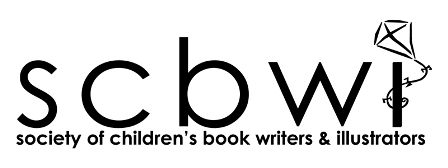
We first became aware of the Society for Children Book Writers and Illustrators a few years ago when David’s middle grade novel came out, and he was invited by Penguin to the national SCBWI conference in Los Angeles. It was totally mind-blowing. Wall-to-wall writers, artists, agents, editors, book people of all ilk who were madly passionate about kid’s books. Since then we’ve send countless writers to SCBWI. They have regional chapters all over the country, and a large national presence. This year we were asked to bring our Pithcapalooza (think American Idol for books) to the annual SCBWI New England chapter’s conference, and we thought we’d take the opportunity to pick the literary brain of SCBWI’s own Kristine Carlson Asselin, who is a very accomplished writer in her own right.
The Book Doctors: How did you first become associated with SCBWI?
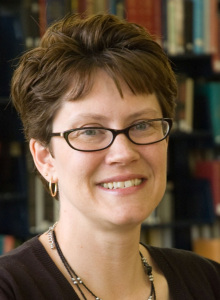
Kristine Carlson Asselin: In 2007, I was hoping to break into writing for children. I’d finished several picture book manuscripts as well as the short story that would later become my first completed novel. I attended a one-day workshop sponsored by SCBWI New England. It literally rocked my world. Before then, I had no idea that writers and illustrators came together to learn from each other. Soon after that fall workshop, I attended my first regional conference, held in Nashua, New Hampshire.
That first year, I felt like a poser. I thought for sure someone would see through the façade and kick me out! But everyone I met treated me like a “real” writer. I was hooked. In 2011, partly because I had previous event management experience, I was approached to co-direct a future conference. I spent two years shadowing the conference directors, and it’s been my great pleasure to serve in the lead role in 2014. It’s been the most amazing professional experience of my career.
TBD: What are some of the benefits of coming to the conference like SCBWI NE?
KCA: The SCBWI New England conference staff works hard to select a diverse menu of over 60 workshops for writers and illustrators of all skill levels, and writers of every genre of children’s publishing. Another tangible benefit includes the opportunity to network and rub elbows with literary agents, editors, and art directors. Intangibles include finding inspiration from our incredible keynoter speakers, fangirling (or fanboying) over your favorite children’s author, and making new friends and critique partners.
TBD: How has being part of an organization like SCBWI helped you in your writing career?
KCA: I can’t imagine where I’d be with my writing career, if I hadn’t stumbled upon that workshop years ago. I love being in the same room as successful authors and learning what works for them, and how to apply it to my own work. I’ve also met some amazing critique partners and beta readers, and dear friends through SCBWI.
TBD: What are some of the things you’ve observed that successful authors have in common?
KCA: All the writers I hang out with write for children, so I can’t speak for writers of books for grown-ups. However, children’s book writers are the some of the nicest, most generous people you’ve ever met. I think most people really embrace the concept of “paying it forward.” I’ve witnessed a lot of effort made by successful writers to mentor and advise newer writers and to “give back” to the universe.
TBD: What have you found effective in promoting and marketing your books? What are some of the things you’ve done that don’t work so well?
KCA: All but one of my published books have been written specifically for the school library market, so the publisher manages the marketing for those books. For me, the priority is to maintain a current blog and website, and to be helpful and supportive on Twitter and Facebook.
TBD: How did you first get into writing nonfiction books for kids?
KCA: I decided early in my career, I wasn’t going to pigeon-hole myself. I knew I wanted to write fiction for children, but I also wanted to experiment with different genres and styles. After my efforts to publish picture books stalled, I stumbled across the contact information for Capstone Press, the publisher of many of my nonfiction titles. I wanted to start something completely different from what I’d been working on. I sent the company my educational credentials and a writing sample, and they offered me my first contract. Of eleven books with Capstone at this point, that first book, WHO REALLY DISCOVERED AMERICA, is still one of my favorites.
TBD: How do you approach writing fiction differently that writing nonfiction?
KCA: I’m under contract for a Young Adult contemporary romance for Bloomsbury Spark (ANY WAY YOU SLICE IT is due out in late fall 2014). It started as a NaNoWriMo book. I wrote 50K words during the month of November–they were raw and awful, but it was so liberating to turn off my inner editor and write fast. I loved it! My nonfiction approach is to research first and then write an outline before I ever start the manuscript. VERY different from fast-drafting without my inner editor!
TBD: How did you go about getting your first publishing deal?
KCA: My first publishing contract for fiction came about from a twitter pitch! It’s true! I pitched a novel during #PitMad in the spring of 2013, and that pitch attracted the interest of Meredith Rich, of Bloomsbury Spark. It wasn’t a slam dunk–she still had to read and like my work. But ultimately that 140 character pitch turned into the contract for ANY WAY YOU SLICE IT.
TBD: What tips do you have for writers?
KCA: We all have different styles, and not everything works for everyone. But my very basic advice for writers is to write. You can’t get better at your craft without practice. So write. A lot. Take workshops, take classes, read blogs, read books in your chosen genre, have your friends give you writing prompts. Write. Write. Write. That’s the best advice I can give!
Kristine Carlson Asselin writes contemporary Young Adult & Middle Grade fantasy. She has written fourteen nonfiction books for the school library market with Capstone Press and Abdo Publishing, the newest (Dangerous Diseases) released in February 2014. She is one of the co-directors of SCBWI-New England this year, and her debut Young Adult novel, Any Way You Slice It, is due from Bloomsbury Spark in late fall 2014. She is represented by Kathleen Rushall of Marsal Lyon Literary Agency. Kris on Twitter: @KristineAsselin
Arielle Eckstut and David Henry Sterry are co-founders of The Book Doctors, a company that has helped countless authors get their books published. They are also co-authors of The Essential Guide to Getting Your Book Published: How To Write It, Sell It, and Market It… Successfully (Workman, 2010). Arielle Eckstut has been a literary agent for 20 years at The Levine Greenberg Literary Agency. She is also the author of eight books and co-founder of the iconic brand, LittleMissMatched. David Henry Sterry is the best-selling author of 16 books, on a wide variety of subject including memoir, sports, YA fiction and reference. His books been translated into 10 languages, and he’s been featured on the front cover of the Sunday New York Times Book Review. They have taught their workshop on how to get published everywhere from Stanford University to Smith College. They have appeared everywhere from The New York Times to NPR’s Morning Edition to USA Today. Twitter: @thebookdoctors


